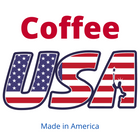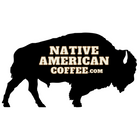Continuing in the Fine Tradition of the Old Country
During our travels throughout Europe – most recently Germany, the Czech Republic, Hungary, and Austria – we resolved to follow the coffee customs of the locals.
Interestingly, most of the coffees we consumed were dark espresso brews, which proved to be very typical of these areas.
Surprisingly – and pleasantly so I might add – the majority of these European coffees lacked the charcoal aroma and bitter after-taste so familiar in the States.
That's why I highly recommend the Espresso Italiano from Coffee.org. Rich and smooth, not bitter or burnt-tasting – just like the "Old Country".
Sit Back, Relax and Enjoy – It's a Social Event
Drinking coffee in Europe is a social event. Europeans find it hard to understand what possible enjoyment can be obtained from such a "watery brew" of coffee that is served in a paper or styrofoam cup, hastily consumed while driving to work.
During our travels, we were fortunate to have shared many tables in many cafes, in many coffee houses, with many strangers who beckoned us to their tables when empty ones weren't available.
It was our first night in Munich, in a quaint cafe, where we encountered our first cup of espresso coffee. At the table, the waitress grated chocolate into the cup and then covered it with a dollop of whipped cream. Yum!
The next day in a small town just outside Munich, after a scrumptious meal, I asked the waiter for the coffee that most patrons ordered. Yes, I was served yet another very dark espresso that was brewed with a trace of chicory.
On to Prague where numerous coffee houses serve a wondrous variety of java. I'm not sure if it was the "Italia Cafe's" Ricotta Pie, or the delightful cafe latte they served up (an espresso topped with a volume of steamed milk and a layer of "froth"). But I sure do remember that coffee house. For late night snacks we frequented the Globe Bookstore and coffee house located near the Prague Museum of Modern Art. We loved the truly delightful espresso based drinks and calorie loaded pastries. What a combo.
Budapest is another coffee oriented city with numerous cafes and coffee houses. We especially liked the many cafes offering a vast assortment of complimentary after-dinner liqueurs. A cup of hot espresso sipped with a jigger of Amaretto after a three course meal – that included a large dish of Hungarian goulash – made for easier sleeping after a full day of sightseeing.
One evening we went to a Turkish cafe that featured belly dancers. Our first time to enjoy a fine cup of java while watching hefty jewels of the orient wiggling around. The Turkish java was brewed individually for each table in a brass pot known as an "Ibrik". The thick, sweet, frothy brew was an especially fragrant drink served with a plateful of sweet and crunchy pistachio: Turkish Halvah.
In Vienna, where numerous coffee houses dot the countryside, we visited the Sacher cafe near the State Opera house. The waiter served us a delicious dense chocolate
sponge cake along with their very own Viennese blend of dark espresso coffee. I scribbled some notes on a napkin: Schwarze is a black coffee, Kapuziner is the local name for the familiar cappuccino – a rather dark brew with a small amount of milk. Add more milk and you have a Schale Braun, add a large amount of milk and you have a Schale Licht.
We were in Naples during the feast of Saint Anthony the Abbot, which is celebrated in January by lighting huge bonfires of discarded household articles and the selling of lesser parts of pig cooked in a tomato sauce.
For breakfast, I frequented a small family-owned tratorria near our hotel where I enjoyed a wonderful sweet bread with my morning espresso.
Talking with the proprietor – and getting the family recipe for the sweet bread – the room began to fill with the strong aroma of fresh roasting coffee.
Upon inquiry, the proprietor mentioned that his son was roasting coffee beans and he invited me to the rear of his shop. A big red and brass Probat coffee roaster was churning away as his son roasted two grades of coffee they were to sell at the market on the weekend.
The 100% arabica beans were the lighter of his darkest roasts. Yet the roast he used gave the bean a very dark color and a shiny, oily surface. This particular brew was both full-bodied and rich, assertive, and extremely flavorful. Interestingly, it was identical to the Cafe Bordeaux French Roast that I obtain from Coffee.org.
Always Premium Quality – Never Less
Fortunately, here at home, we can also enjoy an excellent espresso in the finest traditions of the "Old Country" – buying directly from Coffee.org.
Although a CD playing Strauss Waltzes along with Entenmann's coffee cake will not duplicate a European outdoor cafe, a cup of freshly brewed Espresso Italiano will suffice.
Espresso Italiano is an exquisite looking and fully delightful coffee. It possesses that rich aroma and smooth taste so similar to the fine coffees we had during our travels throughout Europe.
It is certainly superior and has a much more intense flavor than the espresso you're likely to find at the "gourmet section" of your local supermarket. Clearly, it's the higher quality beans used and their unique blend (they wouldn't reveal to me the precise blend).
And very importantly, Espresso Italiano does not have that bitter or burnt taste that you too often find in the espressos of the more popular gourmet coffee bars. Or, for that matter, your local gourmet coffee shop now converted from the old gasoline station.
If you like great espresso or just a slightly darker roasted coffee, let me suggest you try a pound or so of Espresso Italiano. It is perfect for espressos, cappuccinos, lattes, and a wonderful change of pace when you desire a darker roasted cup of coffee. Who knows, it may quickly become one of your favorites. It's one of my go-to coffees for an afternoon cup (no, coffee isn't just for mornings).
Like my pop used to say – if you don't start with quality beans, a quality cup of coffee will not come out of the pot. Hmmm, that reminds me . . .
What I need now is another cup of coffee!
Cheerio,



